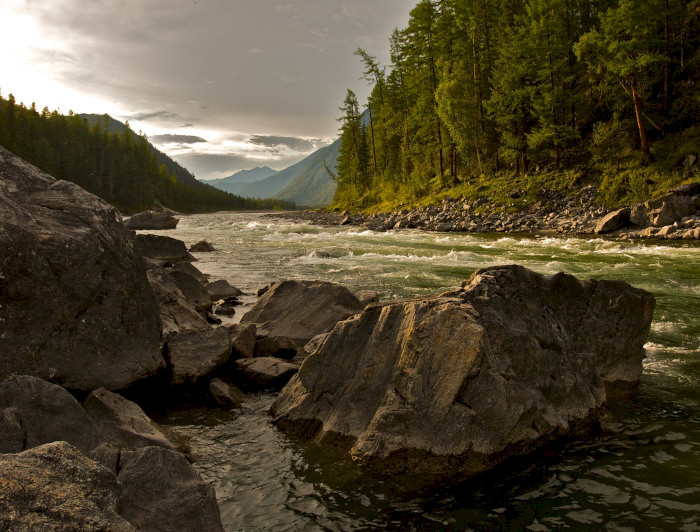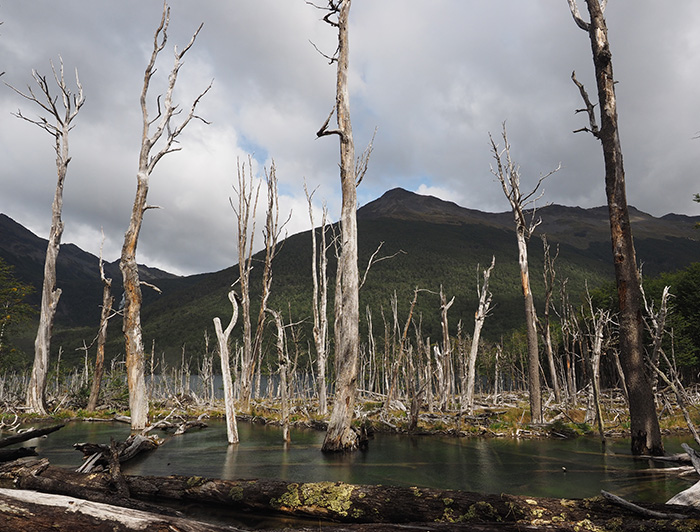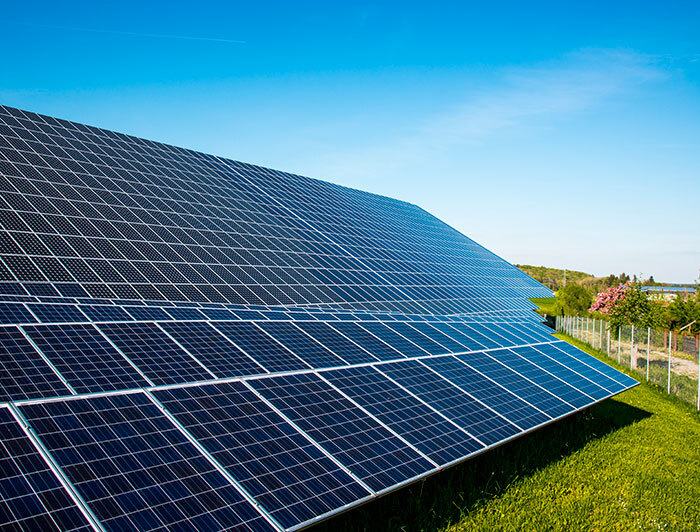
The difficult equation posed by the pandemic
Covid-19 has exposed the fragile relationship between our health and the protection of the environment. Furthermore, the historical decrease in carbon and other greenhouse gas emissions, and the changes in our lifestyle, have shown us that we have the opportunity to bet on a “green” recovery, which will help us prevent not only new pandemics, but also preserve our own species.

photo_camera It is estimated that this year, as a result of the pandemic, between 2 and 3 billion tons of CO2 will not be emitted, according to an article by the BBC.
A break for the planet. This is what the pandemic has meant: the largest drop in carbon emissions (CO2) ever recorded in human history. As a result of the quarantines and social distancing measures, there are fewer vehicles on the streets and fewer planes in the sky, we are looking for more efficient forms of consumption, and economic and productive activities have decreased, with the resulting drop in associated energy consumption, among other effects.
Worldwide, as of March of this year, average land transport had already decreased by 50% compared to the same period in 2019, according to a BBC article. Also, 90% of the flights had been canceled in Europe and 50% in the United States. Since February, NASA satellites have detected drops of between 20% and 30% in nitrogen dioxide or NO2 emissions -a harmful gas emitted by vehicle engines, power plants, and industrial complexes- in some of the hardest-hit countries by the coronavirus, such as Italy, China, and the United States.
"The current pandemic represents a major global experiment to assess the effects of a reduction in economic activity and large electricity generators, such as coal-fired power plants. In this context, the indirect effects of the pandemic have been positive in terms of reducing emissions of CO2, NO2, and other greenhouse gases,” said Pablo Marquet, professor of the Faculty of Biological Sciences.
The International Energy Agency (IEA) estimates that by 2020 the world will use 6% less energy, leading to a drop in CO2 emissions. According to the BBC article, this is equal to the entire energy demand of India and its 1.7 billion inhabitants no longer being used. In total, it is estimated that emissions will fall by 4-8%, which represents somewhere between 2 and 3 billion tons less of this gas in the atmosphere.
“This implies an immediate effect in some cases, such as cleaner air in some cities, but in others the effects will be slower,” says Sebastián Vicuña, director of the UC Center for Global Change and professor of the School of Engineering. “High temperatures, for example, are an accumulated effect of hundreds of years of emissions of a gas that is concentrated in the atmosphere and will remain about one hundred years on average,” added the researcher. Therefore, the effects such as the melting of glaciers and rising sea levels will continue.
“The effects are indirect for the environment,” added Juan Armesto, professor of the Faculty of Biological Sciences and director of the "Ecosystem Sciences" line of the Institute of Ecology and Biodiversity (IEB). Some situations that have surprised us, such as the presence of mountain lions in Santiago, have to do with our relationship with our surroundings rather than with changes in the environment.
As the researcher explained: "When there is a lesser presence of humans on the urban boundaries with the wild environments, animal populations may advance beyond their territorial limits. In reality, the limits of animal territories are imposed by human presence and activities. As cities retreat -due to pandemics, fires, earthquakes or other phenomena- some wild animals expand their territory. This implies a greater number of dangerous encounters with humans. Let's remember that we live in cities embedded in an environment that we don't know well.”
As Vicuña stated, the Covid-19 "has made us realize very clearly that we have an impact on the planet." And, according to Marquet: “This shows that it is possible to reduce emissions, but if it is not sustained over time, the impact will not be significant. We need to achieve carbon neutrality regardless of the pandemic.”
As warned by Juan Carlos Muñoz, director of the Center for Sustainable Urban Development, (CEDEUS) and professor of Transport and Logistics Engineering, of the School of Engineering: "The pandemic has shifted the focus of the political agenda away from climate emergency. I hope that once we find a vaccine we will refocus on that other crisis, which will likely be stronger and have more painful impacts and for which the solution cannot be developed in a laboratory, but that instead requires changing the way we inhabit our planet.”
Biodiversity: The thin line between health and disease

Deforestation, the uncontrolled expansion of agriculture, intensive mining and the exploitation of wild species, among others, are some of the conditions that encourage the spread of wildlife diseases. (Photo by: Nicole Saffie)
Our health depends on biodiversity. “Humans and the Sars-Cov2 -which causes the coronavirus disease- are part of biodiversity. The problem lies in the fact that the illegal trade of species and human intrusion into pristine ecosystems to develop productive activities has exposed us to some of the biodiversity that generates a pathogenic reaction in humans,” explains Professor Pablo Marquet.
Deforestation, the uncontrolled expansion of agriculture, intensive mining and the exploitation of wild species, among others, are creating the "perfect storm" for the spread of diseases from wildlife to people. According to an article from the Biodiversity and Ecosystem Services platform (IPBESS) , diseases like Covid-19 are caused by microorganisms that infect our bodies which, in more than 70% of cases, come from wildlife and domesticated animals.
According to this study, animal-to-human diseases cause an estimated 700,000 deaths per year. The potential for future pandemics is vast. There are an estimated 1.7 million unidentified viruses living in animals and birds that can infect humans.
“If we control the illegal trafficking of species once and for all, and restrict human consumption of wild species and the transformation of pristine ecosystems, especially in the tropics, we can reduce the chances of encountering new pathogens,” emphasized Marquet.
Moreover, according to Professor Armesto, for years there has been overwhelming evidence that biological diversity reduces the risks of outbreaks of contagious diseases that can be harmful to humans (Ostfeld et al. 1999, Sandifer 2015). “Biodiversity lessens the impacts and also provides more organisms -for example parasites, predators- that counteract the vectors of the disease.”
In better-preserved environments with greater biological diversity, the risk to humans is quite low. However, this risk increases in places that have been excessively modified by human beings, due to intensive productive activities. In addition to this, the houses inserted in these territories, which are close to each other, make people more prone to catch zoonotic transmitted diseases (by wild or domestic animals).
"Wild environments can be a benefit to society and also a threat, if we disturb and transform them without knowing about the functions we are affecting. Because of the growing human impact and homogenization of the planet, and the globalization and transportation between countries, we ought to expect new pandemics in the future," said Armesto.
In fact, pandemics of zoonotic (or animal) origin are not new. Let's recall the avian flu, a disease that affects birds and was first identified in Italy in the 19th century, or the swine flu, found in poultry and pigs, which caused a global pandemic between 2009 and 2010. As well as Severe Acute Respiratory Syndrome (SARS) and Ebola, whose origin has not been discovered, but is likely to be hidden in some animal or other reservoirs.
But then, what do we do? According to the faculty member: "To minimize the impacts, we need to care more about the environments we live in, we need to be humbler, we are not above these natural disasters, and we must make a greater effort to maintain "healthy" ecosystems, that is, free of pollutants and far-reaching human impacts, deforestation, large-scale land use change, among others.
This reality highlights the ever-present link between human health and ecology, which we often overlook. “This is an increasingly urgent and prevalent topic of interdisciplinary research in modern society to prevent epidemic outbreaks,” said Armesto.
Green or gray recovery?

One thing is clear: the pandemic has changed the way we work, transport, consume and even interact. Our lives are no longer the same. There has been a drop in the use of public transport, an increase in the use of alternative transport such as bicycles, people are working remotely, using technology for meetings and activities, making home gardens and using resources more efficiently.
All this opens up great opportunities to think about a green recovery, one that is sustainable and more in line with the care of our environment and our own quality of life.
According to Sebastián Vicuña, the perfect moment to decisively bet on sustainable choices is after the pandemic when we need to reactivate the economy. "The challenge is to keep growing, while not increasing emissions,” he said. For example, investing in renewable energy or increasing energy efficiency are seen as part of the solution.
But as Juan Armesto warned, “we can anticipate negative environmental effects, because post-crisis economic demands require to loosen the regulations agreed upon by society that protect natural environments, rivers, forests and endangered species. Regulations that have often taken a long time to implement are scratched in the blink of an eye.” A great example of this is “what happened in the United States this year”, said the researcher, where economic activities such as intensive agriculture were extended into fragile or threatened ecosystems, and restrictions were removed, affecting the state of the environment.
As Juan Carlos Muñoz concluded: "This is an opportunity to rethink how cities are structured and the impact of our daily activities, which are not harmless. However, the changes needed to reshape our coexistence require authorities with a clear vision, and precise and rapid implementation. Officials should take advantage of this window of opportunity to make changes that can stop people from returning to business as usual. The future, as always, is in our hands.


